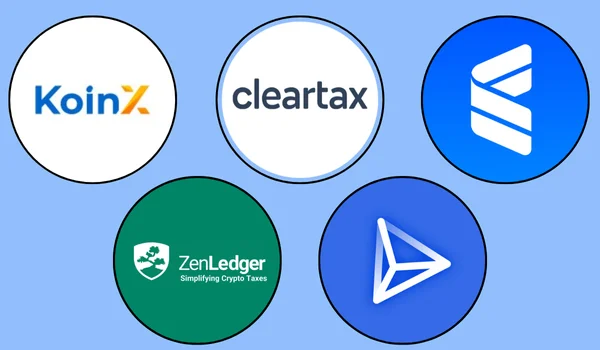In today’s fast-paced financial world, Indian investors are increasingly exploring crypto staking as a reliable way to earn passive income. With the rising popularity of cryptocurrencies like Ethereum, Solana, and Polygon, staking offers a smart way to grow your holdings without active trading.
If you’re wondering what staking means, how to get started in India, or which coins to stake — this guide will walk you through everything step by step.
🔍 What is Crypto Staking?

Crypto staking is the process of locking up your cryptocurrency in a blockchain network to support its operations — like validating transactions — in return for staking rewards. It is primarily available on Proof of Stake (PoS) or Delegated PoS blockchains.
Think of it like earning interest on a fixed deposit. The longer and more you stake, the more rewards you earn — usually in the same token.
✅ Key Benefits of Crypto Staking
| Benefit | Explanation |
|---|---|
| Passive Income | Earn rewards (like interest) without active trading. |
| Supports the Network | Helps secure the blockchain and validate transactions. |
| Lower Energy Use | More eco-friendly than Bitcoin’s Proof of Work system. |
| Compounding Returns | Reinvest rewards for faster portfolio growth. |
 Is Crypto Staking Legal in India?
Is Crypto Staking Legal in India?
As of 2025, crypto staking is not illegal in India, but it is not officially regulated either. However:
- All income from staking must be declared.
- Returns from staking are taxed as “Income from Other Sources” under India’s Income Tax Act.
- The 30% tax on crypto applies only on sale, not while earning staking rewards (unless converted).
🔔 It is recommended to consult a tax advisor and report earnings via crypto tax platforms like KoinX, TaxNodes, or Zerodha’s Quicko.
🪙 Best Cryptocurrencies for Staking in 2025
Here’s a list of top coins that can be staked by Indian users and their estimated Annual Percentage Yield (APY):
| Coin | Expected APY (%) | Minimum Tokens to Stake | Lock-In Period | Popular Wallets/Platforms |
|---|---|---|---|---|
| Ethereum (ETH) | 3–5% | 32 ETH (direct) or less via pool | Variable | Lido, Coinbase, Binance |
| Polygon (MATIC) | 4–8% | 1 MATIC | Flexible | Polygon Wallet, Binance |
| Solana (SOL) | 5–7% | 0.01 SOL | 2–4 days | Phantom Wallet, Solflare |
| Cardano (ADA) | 4–6% | 5 ADA | Flexible | Yoroi, Daedalus |
| Avalanche (AVAX) | 7–11% | 25 AVAX | 2 weeks | Avalanche Wallet, Binance |
🧭 How to Start Crypto Staking in India (Step-by-Step Guide)
Step 1: Choose a Crypto Exchange or Wallet
Pick a platform that supports staking and is FIU-registered in India:
- Exchanges: CoinDCX, WazirX (via Binance), CoinSwitch
- International Platforms: Binance, Kraken, Coinbase
- Wallets: Trust Wallet, MetaMask + Lido, Phantom (for Solana)
Step 2: Buy a Staking-Compatible Coin
- Example: Buy MATIC on CoinDCX or Binance. Always check if the coin you’re buying supports staking.
Step 3: Transfer to Wallet (If Needed)
- For non-custodial staking, transfer tokens to a staking-supported wallet like MetaMask, Trust Wallet, or Yoroi.
Step 4: Delegate or Stake
- Direct staking: Lock tokens in wallet or validator node.
- Liquid staking: Use protocols like Lido Finance to stake without locking assets.
Step 5: Monitor and Reinvest
- Track rewards and consider reinvesting (compounding) to boost earnings. Some platforms offer auto-stake features.
🏦 Top Platforms for Crypto Staking (India-Friendly)
| Platform | Type | Staking Available | INR Support | Notes |
|---|---|---|---|---|
| CoinDCX | Centralized | ETH, ADA, MATIC | ✅ Yes | FIU-compliant, supports INR deposit |
| Binance | Centralized | 100+ coins | ❌ No (via WazirX) | Offers flexible & locked staking |
| Kraken | Centralized | ETH, DOT, ADA | ❌ No | Reputable, supports ETH staking |
| Trust Wallet | Non-custodial | BNB, DOT, SOL | ❌ No | Simple for beginners |
| Lido Finance | DeFi Protocol | ETH, MATIC, SOL | ❌ No | Liquid staking with no lock-in |
⚠️ Risks of Crypto Staking
| Risk Type | Description |
|---|---|
| Market Volatility | Coin prices can drop even while earning rewards. |
| Validator Risk | Poor validator performance can lead to “slashing” (loss of staked funds). |
| Lock-In Period | Some staking requires locking funds for days/weeks. |
| Platform Failure | Centralized platforms can face hacks or regulatory bans. |
💸 How Much Can You Earn from Staking?
Assuming you stake ₹50,000 worth of MATIC at 7% APY, here’s a simple estimate:
- Annual Earnings: ₹3,500
- If compounded quarterly: ₹3,634
- If staked for 3 years with reinvestment: ₹11,236 total
🚀 Note: These are rough estimates. Real earnings vary based on token price, staking duration, and compounding.
🧾 Tax on Staking Rewards in India (2025)
| Tax Component | Applicability |
|---|---|
| At the time of reward | Considered income; taxed as per slab rate |
| At the time of sale | 30% flat tax on gains |
| TDS | 1% TDS may apply on transfer or withdrawal |
✅ Use crypto tax tools like KoinX, ClearTax, or TaxNodes for easy reporting.
🔐 Tips to Maximize Staking Safely
- ✅ Start with liquid staking if you’re new (e.g., Lido).
- ✅ Always stake through reputable platforms.
- ✅ Don’t stake all your holdings — keep some liquid.
- ✅ Consider cold wallets or hardware wallets for security.
- ✅ Monitor validator performance if using direct delegation.
📌 Final Thoughts
Crypto staking is a promising way for Indian investors to generate passive income without frequent buying or selling. As regulations tighten and awareness grows, staking will become a mainstream financial tool in India.
🎯 Key Takeaways:
- Staking is legal but taxable in India.
- Choose coins wisely based on APY, lock-in, and platform.
- Use safe platforms and wallets for better control.
- Keep track of rewards and report them accurately.
💡 Want to start staking but confused about which coin or platform is best for you? Ask me for personalized suggestions!





